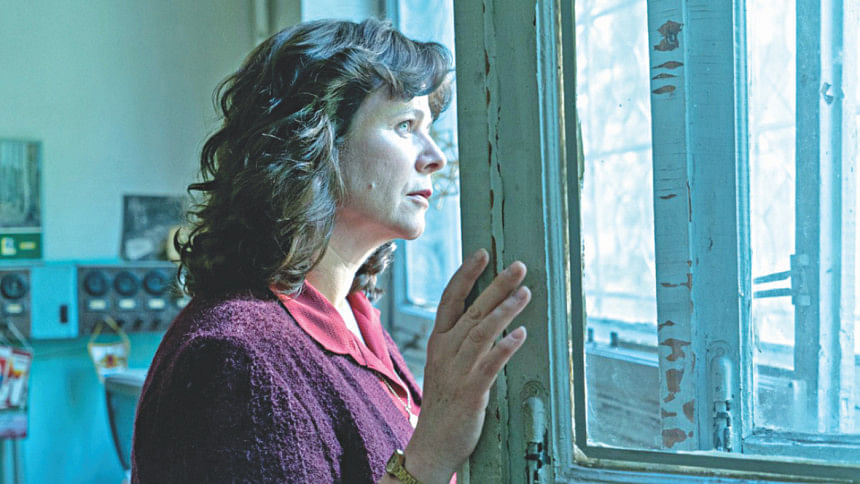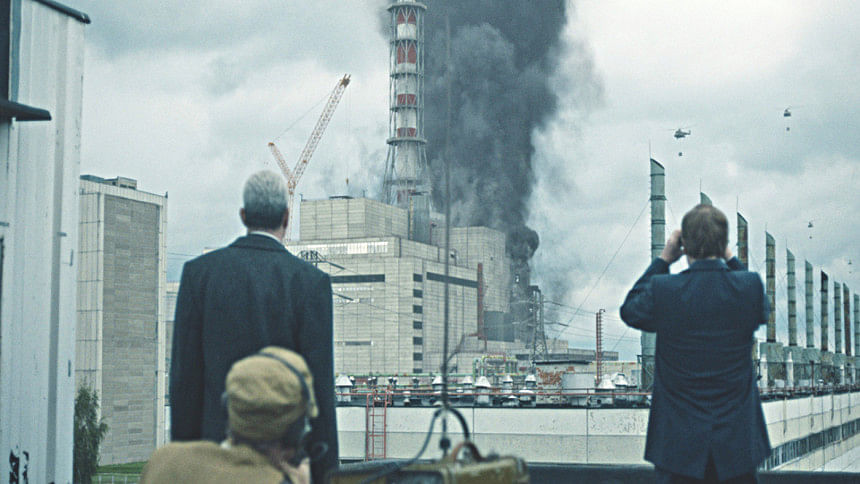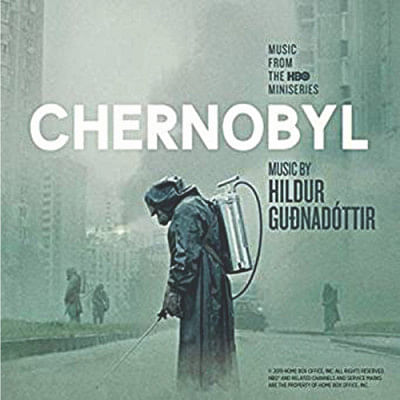HBO’s Chernobyl: Flashback, premonition, or forewarning?

Directed by Johan Renck and written by Craig Mazin, HBO’s five-part miniseries aired earlier this month takes us back to the worst nuclear disaster in history. On April 26, 1986, the fire and explosion at Unit 4 of Chernobyl (Ukraine)’s nuclear power plant set off a toxic radiation that infected around 237 people with acute radiation syndrome (ARS), 28 of whom died within weeks of the explosion, according to the World Nuclear Association. Large parts of Ukraine, Russia, and Belarus were also contaminated as a result of the accident, supposedly caused by design flaws and insufficiently trained operators. Chernobyl the TV show zooms out of these data and casualty numbers and pans over the disaster in more humane terms—the physical, moral, and emotional disintegration of those who were affected, and the politics that triggered these events.
Caused as it was by what a Guardian review called the “cult of obedience”—a key characteristic of Soviet life—the Chernobyl narrative has long been a convoluted one. Official figures vary: The Chernobyl Forum, comprising of eight UN agencies and the governments of Ukraine, Russia and Belarus, predicted 8,000 deaths from radiation; but Greenpeace predicted an extra 93,000 deaths caused by cancer, and the non-governmental organisation Chernobyl Union of Ukraine estimated the death toll at 734,000, according to a Reuters report. The event itself was just as mired in cover ups, with the Soviets struggling to hide the magnitude of the disaster both at home and across neighbouring Europe even as the radiation crept to Sweden. A Guardian piece recently written by an eye-witness recalls how France also held back information on the radiation hanging over its territory, how Hans Blix, then director general of the International Atomic Energy Authority (IAEA), underreported the dangers of the explosion, and how state officials blamed the babies born after the explosion with heart defects and physical deformities on mere “poor food and poverty”.

At first glance, Chernobyl’s plot seems like the most obvious portrayal of this twisted narrative. Serving as the moral backbone of the drama are Professor Valerie Legasov (played by Jared Harris), deputy director of the Kurchatov Institute, and nuclear physicist Ulana Khomyuk (played by Emily Watson), whose technical knowledge of nuclear science warns them of the true implications of the disaster, and forces them to force others—mainly state officials—to accept the same. One of the most moving scenes appears early in the show when Legasov describes what looms ahead to a roomful of state officials, spoken with utmost calm and a sense of resignation. “The release of radiation will be severe and will impact all of Soviet Ukraine, Latvia, Lithuania, Byelorussia, as well as Poland, Czechoslovakia, Hungary, Romania, and most of East Germany. For much of the area, a nearly permanent disruption of the food and water supply, a steep increase in the rates of cancer and birth defects. I don’t know how many deaths there will be, but many. For Byelorussia and the Ukraine, “impact” means completely uninhabitable for a minimum of 100 years,” Legasov says. The show is peppered with such speeches, delivered mostly by Legasov and Khomyuk: simple words, precise descriptions that force the implications of the catastrophe to dawn upon both their listeners and the show’s audience. The gorier scenes of disintegrating skin in overcrowded hospitals are weaved into these dialogue-heavy scenes, offering brief but potent visual proof of the scientists’ warnings.
This dramatisation and simplification of events (Khomyuk, for example, is an entirely fictional character) has received some ire by critics (The New Yorker has released a detailed account of all that the show got wrong), and rightfully so. Some of the action seems almost silly: there is a recurring pattern, for instance, of a new character showing up to point out the technical errors made by another expert who until then had been portrayed as the person with all the answers. These follies deserve criticism because the show’s popularity and the medium’s wide reach mean that this account is how most of the world will now likely remember Chernobyl’s history. Through such misrepresentation, one can argue that the show is adding newer layers of misconception to an already confusing narrative.

But the nuance that the show foregoes in terms of plot is tied back in through its non-linear storytelling. The scenes jump back and forth in time, are labelled every few minutes by location and time marker, and are filtered with a greyish-yellow tinge—all a deliberate reminder of the fact that the events depicted are a pastiche of flashbacks from an extremely confusing, traumatising time in the past. While the clarity of the scenes—the dialogue, the camera work, the pacing and the soundtrack—helps put the audience firmly in the midst of the action, the fragmentary structure framing the storytelling and the short time span of each scene snap us out of the illusion that these are entirely reliable accounts. You’re forced to remember that you’re wading through personal memories, and thus remain conscious of the subjective nature of the narrative.
It is this aspect of the show that makes it so pertinent to our time. Bangladesh is currently hosting the construction of its own nuclear power plant in Rooppur. News of irregularities in the project’s expenses have recently been surfacing in the media. And an op-ed titled “Nuclear Power Plant: Challenging Rosatom’s Claims” published in this newspaper last year pointed out the grey areas surrounding the project—the deaf ear turned to dissenting voices of the public regarding the project and more importantly the safety measures in place for residents of Pabna, Bheramara, Lalpur, Kushtia and Ishwardi all living within 30 km of the site. Would these thousands of people be able to evacuate within 15 minutes if an accident occurred? Are the human and environmental costs being forecasted correctly as Bangladesh moves on with the project?
Despite its many flaws, it is these issues that a show like Chernobyl drives home successfully. It is all too easy to feel separated from nuclear threats, to believe that what appears on the news will somehow only affect those far removed from us. But the cover ups, the need to maintain a glorified narrative, and the negligence of safety measures making up the premise of the show are all part and parcel of daily life in Bangladesh. Even more frightful than the deliberate errors of Chernobyl’s perpetrators were the unanticipated implications of the disaster; the explosion and its toxic legacy arose because those in charge simply didn’t know better. Those not in charge—the pregnant wives visiting the afflicted firemen in the hospital, the parents who stood watching with their babies the magnificent spectacle of the fire even as radiation particles permeated their hair and skin—knew even less. That such dangers inadvertently escape the most stringent of safety measures to leave lasting effects is depicted beautifully by the HBO series; they deliberately grab attention through slow motion, zoomed in shots. It certainly inspires us, the audience, to reimagine the unimaginable threats exposed to us from ambitious state projects. It’s a laudable achievement as an entertainment medium. But in real terms, is it enough?

 For all latest news, follow The Daily Star's Google News channel.
For all latest news, follow The Daily Star's Google News channel. 



Comments